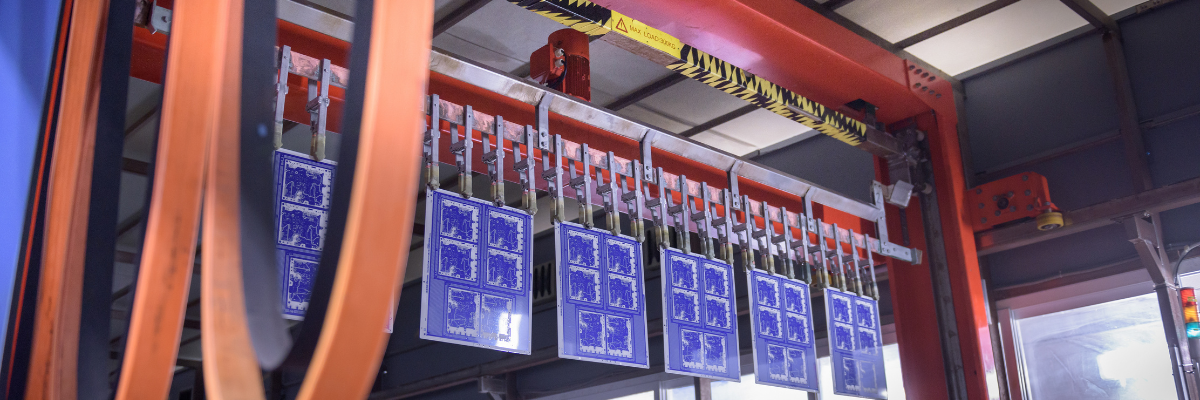Discussing Assembly Manufacturing Technology and Its Processes

Discussing Assembly Manufacturing Technology and Its Processes
Imagining electronic devices without printed circuit boards (PCBs) is impossible. Irrespective of their sizes, most devices rely on PCBs, as they bring life into them. PCBs are made using different materials, such as copper, aluminum, etc.; their assembling is done by placing required components to make them functional. Although PCB assembly seems straightforward, it involves different layers or steps. With the increasing demand for high efficiency and performance, the PCB designs are getting complex. The complexity is brought upon by factors like miniaturization, high layer density, multiple components, and much more. With such complexities, it is quite challenging to rectify errors if they occur at any of these stages. This may drastically affect the performance of the final product. This is why following appropriate PCB assembly steps to assemble the blank boards is important. Are you intrigued to know more about it? This post discusses PCB assembly manufacturing technology and processes involved in detail. So, stay connected.
5 Essential Practices and Guidelines in PCB Assembly Manufacturing Technology
PCBs have become increasingly popular and have applications in a wide range of electronic devices, ranging from everyday essentials like computers and smartphones to sophisticated medical, communication, satellite, and navigation equipment, among others. To cater to the demands of these complex applications, it is crucial to design PCBs using reliable software while considering the specific requirements. In addition, employing the appropriate technologies and processes during the manufacturing and assembly of PCBs plays a pivotal role. Here are some key best practices that PCB manufacturers and assembly service providers adhere to as a part of PCB assembly manufacturing technology.
-
Pre-Planning and Preparation: Initially, you need to finalize the PCB design. Once it is done, the manufacturing process comprises two stages – the production of bare boards, and the second is to populate it with all required components, such as heat sinks, vias, traces, and more. Assembly of the circuit boards demands two files, namely, the bill of materials (BOM) and the component placement list (CPL). BOM contains essential information about the component, such as part name and number, product code, quality, and size; CPL specifies the positioning of every element on the circuit board.
-
Component Availability: It is crucial to check the availability of required components from vendors in advance. The service provider must ensure the components can be procured on time or shortly before the assembly. If the specified components are unavailable or out of stock, an API system linked to prominent component suppliers can be utilized to source the necessary components. If the components are ready, apply solder paste on the board using a stencil made of a thin metallic sheet. Carefully remove the stencil from the board after the application of solder paste.
-
Component Placement: The next important step is to pick and place the fine components. This can be done either manually or through an automated system. Manual component mounting is ideal for through-hole PCB assembly, while an automated machine is used for surface mount. Undoubtedly, automatic component mounting offers many benefits than manual mounting.
-
Component Soldering: Wave soldering is commonly used for through-hole assembly, while surface-mount assembly utilizes reflow soldering. Make sure that the components are firmly in place and consider factors such as the inclusion of heat sinks for proper ventilation, the quality of solder joints and wires, and other important considerations to ensure the overall reliability of the assembly.
-
Inspection and Testing: An inspection and quality check must be done right after completing all the above processes. There are three ways to inspect the circuit boards - visual inspection, automatic optical inspection (AOI), and X-ray inspection. The visual inspection can only check the errors that are visible to the eyes, AOI machines use high-resolution cameras for in-depth testing, while X-ray inspection can inspect complex PCBs. Once done with the inspection, PCBs are tested for functionality.
With PCBs emerging as one of the fastest-growing segments in the electronic industry, manufacturers diligently follow various assembly manufacturing technology and processes to meet the escalating demand. To ensure the creation of top-notch circuit boards that offer superior quality and performance, partnering with a reputable manufacturer like Twisted Traces is crucial. With their profound understanding of your requirements and design, the company is well-equipped to deliver exceptional results. With a commitment to excellence and a track record of success, the company is dedicated to providing you with the best possible PCBs and assemblies to power your electronic innovations. You contact the team at Twisted Traces to discuss your requirements and decide upon the right PCB assembly manufacturing technology.
.png)



.png)
